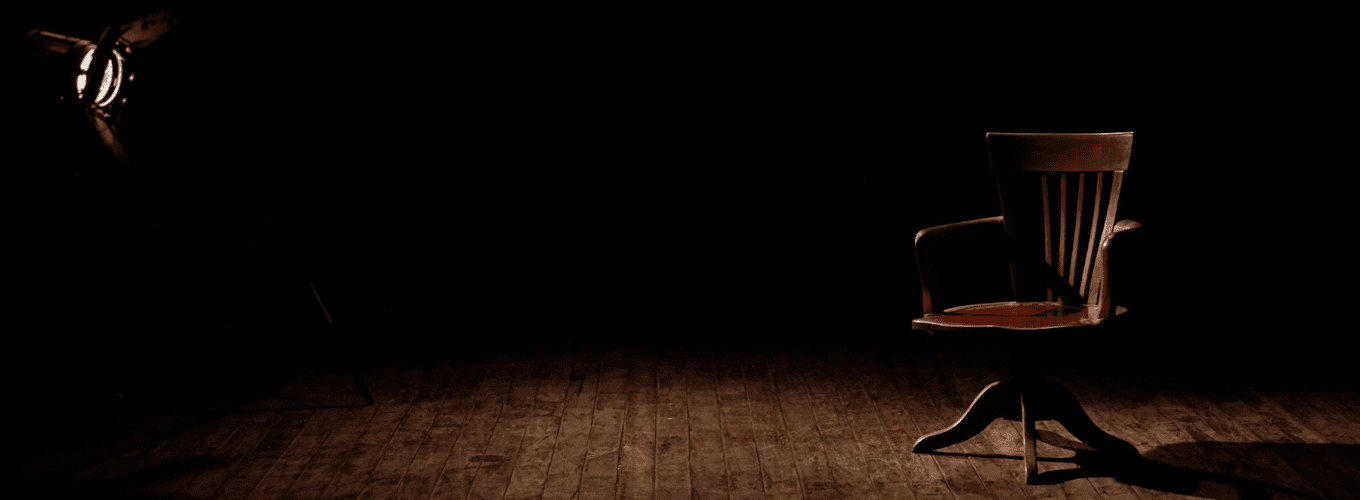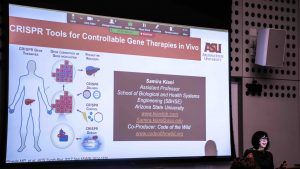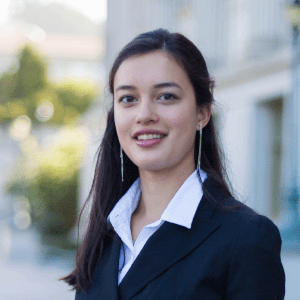
Speaker Spotlight: Samira Kiani
Undergraduate science communication intern Mira Cheng sits down with speakers from the weekly IGI Seminar Series to discuss their innovations, motivations, and eclectic hobbies.
Dr. Samira Kiani is an Assistant Professor at the School of Biological and Health Systems Engineering, Arizona State University. I interviewed Dr. Kiani when she spoke at the IGI on April 2nd, 2019. An abridged version of our conversation appears below.
MC: Could you please tell me a little bit about your journey in becoming a scientist?
SK: “I wasn’t planning on being a scientist when I entered college. I’m originally from Iran, and [in] the system of education there, you go straight from high school to university. I got straight into medical school with the idea that I wanted to become a doctor. Shortly after I went to medical school though, I realized that medicine, although it was very fun, was more about memorization rather than problem solving. It was not easy to go back and relive the entrance exam, so I finished medical school.
During medical school, I started to get engaged in research in the department of pharmacology. I started to realize research is fun because it challenges you, you get to ask questions, and you get to design experiments. When I finished my training in medicine, I moved to the UK and decided to take two years to really figure out what I wanted to do with my future. I wanted to incorporate art and design, I wanted [my career] to be a creative pathway. I went wild to explore the different opportunities in the world to understand what matches my interests. I got introduced to synthetic biology in 2007, and for me it was very interesting because [the process] begins with an idea and then you design how that idea comes to fruition and you actually see what is happening. I joined a lab at MIT, and that started my whole journey.”
MC: What are some challenges that you’ve faced throughout your career?
SK: “I think the hardest challenge is being unconventional in the world of science, which is very familiar with the usual steps that you have to take in order to be a successful scientist. There are guidelines, standards on paper, that you really need to meet in order to be defined as successful. If you are not within those standards, it’s going to be very difficult for you to find your way in. For me, being an MD without a PhD, proving that I can do basic science, and that I can teach basic science was challenging. It’s still a challenge. This is not limited to me, I think there are so many people who take unconventional pathways and then face a lot of challenges.”
MC: How did you come to work on the project that you are going to talk about in the seminar lecture?
SK: “In my last postdoc position, I was researching synthetic biology and how we can build and design and then understand biological systems. And these synthetic gene circuits that I was working on were using CRISPR-Cas9, and its function as a programmable transcription factor. It was around 2014 and 2015. Around that time my father got diagnosed with pancreatic cancer, so all my attention shifted to that. While I was looking into clinical trials for him, I realized that [there are] a very limited number of clinical trials going on, and the ones that are actually going on are very difficult to sign up for. I started to think, what if we could make these treatments, like gene therapy, much more accessible to patients? Maybe we need to make them safer and controllable. I started thinking about how I can do that, how I can work with cancer and gene therapy. These gene circuits employ Cas9, actually control Cas9, so I got interested in using these synthetic gene circuits for safety and controllability of gene therapies.”
MC: What do you hope to achieve with this project?
SK: “The end goal is to make these tools available and safer so they can be available to patients faster. That’s what inspires me to do this research.”
MC: Where do you see your field in ten years?
SK: “It’s changing the future. I see CRISPR technology and genome engineering not only as a technological revolution but also as a societal revolution. The ability to use CRISPR not only for somatic engineering, but also for germline engineering, will enable us to treat many diseases and influence the genetic code of human beings. The field is going to change our future, the field is going to change our society.”
MC: Does your diverse background influence how you approach science and research?
SK: “I consciously and actively try not to be focused on only the science. It’s very easy for science to take you with it. I try to very consciously monitor the fact that I have to step back. I try to really create engaging ways to communicate with the public about science and genome engineering.”
MC: What are some ways in which you’ve engaged with the public?
SK: “Since 2017, I’ve [been] working on two projects that go hand in hand. One is a documentary film about what our future looks like in the eye of genomic revolution, it’s called “Code of the Wild.” It’s a documentary film about some of the characters who are shaping the genomic revolution and our future. And in parallel with the documentary film, I’m working on a communication platform called, “Tomorrow Land,” where we invite people, whether they are scientists or artists or the general public, to submit their opinions about how CRISPR is shaping the future of humanity. We have this archive of short video clips that can be arranged together with the help of machine learning. You can watch storylines based on those clips and make your own documentary. The idea is having a more active participation of the public, and all the stakeholders.”
MC: What is something that you do a lot that people wouldn’t necessarily expect (in lab and out of lab)?
SK: “Being a filmmaker in addition to a scientist. This is going to be my first film, but I’m very interested in continuing.”
MC: If you could listen to a conversation between any two people, who would they be?
SK: “My father and I.”
MC: What advice would you give your younger self?
SK: “Be more patient.”


 By
Mira Cheng
By
Mira Cheng